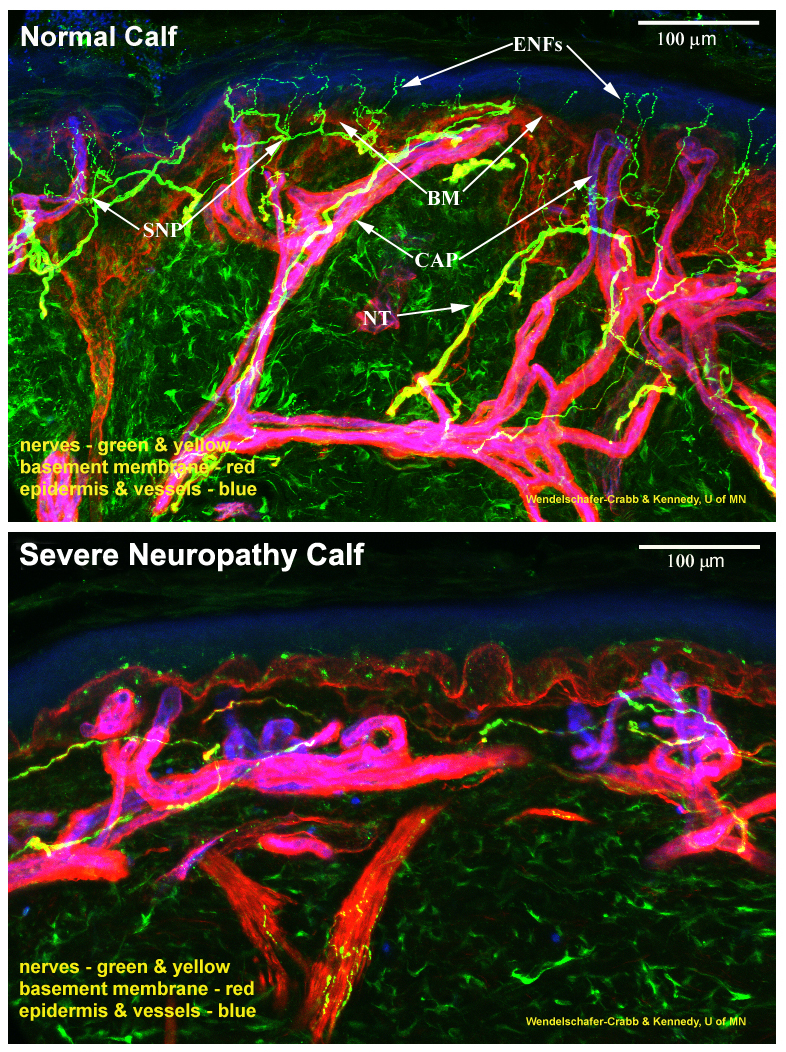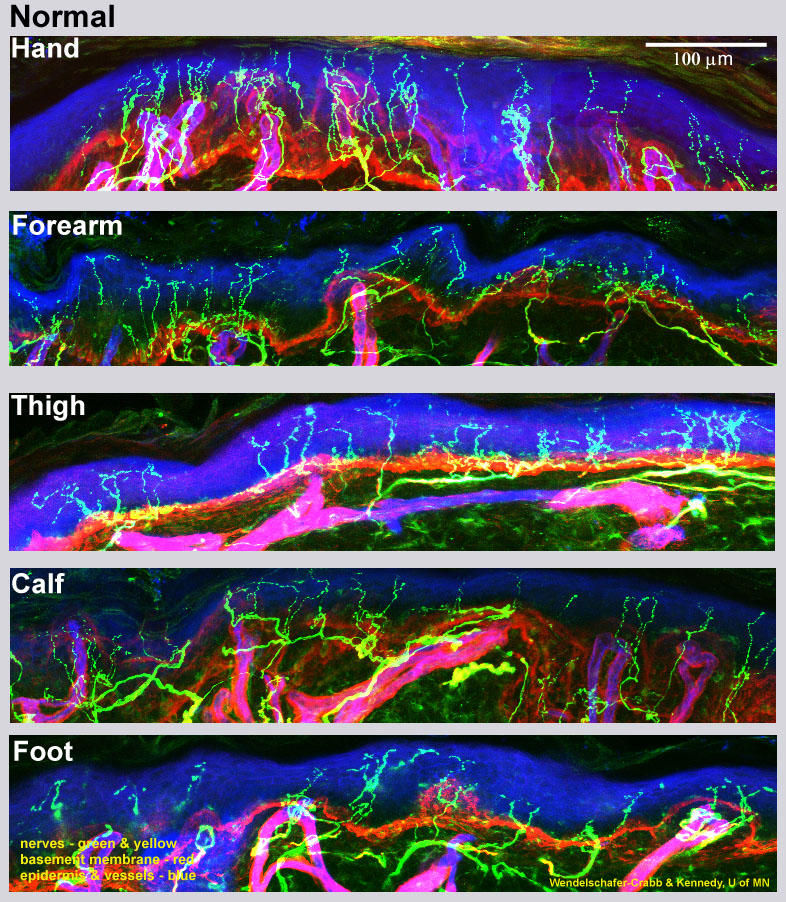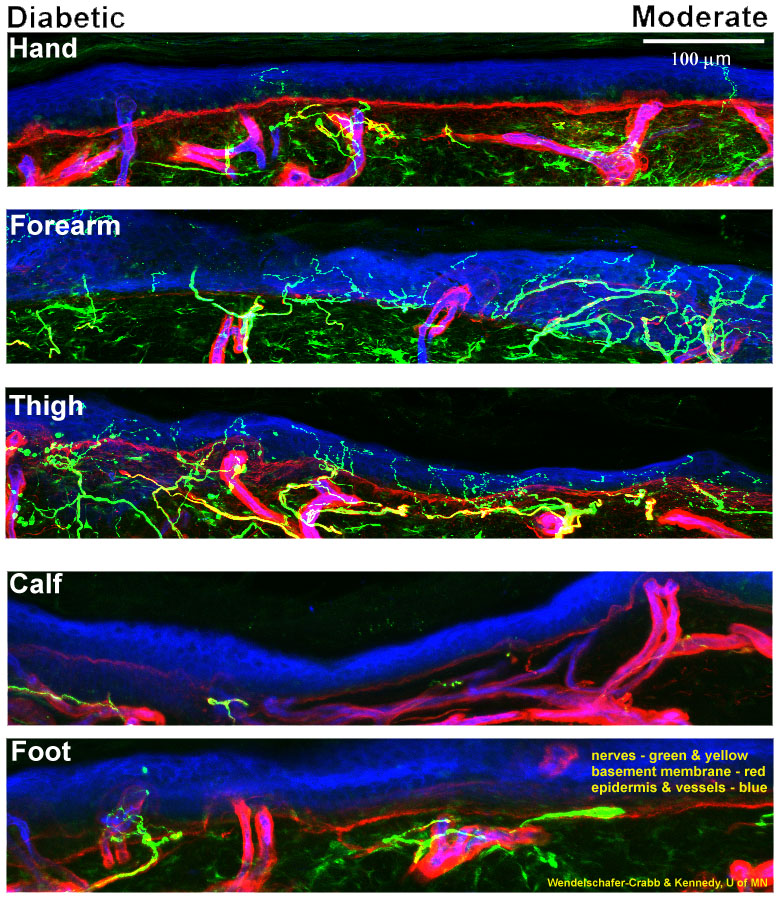Morphologic Assessment of Skin Innervation
Confocal images of calf skin with normal and severe neuropathy. Nerves appear green, basement membrane (BM) appears red, and capillaries (CAP) appear magenta. Nerve fibers extend from trunks (NT) in the dermis and branch to form the subepidermal neural plexus (SNP) from which arise fine epidermal nerve endings (ENFs). In normal healthy humans, many ENFs arise from a full SNP to innervate the epidermis. In skin biopsies from subjects with severe neuropathy, the epidermis is often devoid of nerve fibers and the SNP consists of just a few nerve fibers, as seen in the lower image. Scale bars = 100 µm.
Primary antibodies (& lectin) used for Immunofluorescent staining
- Protein Gene Product 9.5 (PGP 9.5) for all nerve fibers
- Collagen type IV (Col IV) for basement membrane at the interface of the epidermis and dermis, as well as on vasculature and sweat glands
- CGRP, Substance P, and VIP for labeling nerve fibers containing these neuromodulatory neuropeptides
- Tryptase for labeling mast cells
- Biotinylated Ulex Europaeus Agglutinin 1 (Ulex) is a lectin used for labeling superficial epidermis and endothelial cells
Species specific secondary antibodies are then added to detect these primary antibodies and biotinylated lectin.
We have characterized and quantified ENFs from five body locations in both normal subjects and subjects who have diabetes mellitus.
These images demonstrate the difference in ENF density at the five body locations from a single healthy control subject (Normal) and a single diabetic subject (Diabetic) with neuropathy. The ENF density of the healthy subject contrasts with that of the subject with diabetic neuropathy - showing minimal or no ENFs in the hand, calf and thigh (distal sites) as opposed the forearm and thigh (more proximal sites) where ENF density is similar to healthy subjects. This illustrates the length dependent nature of diabetic neuropathy where a distal to proximal gradient is seen. Scale bar = 100 µm for all images.
Epidermal Nerve Fiber (ENF) Density Analysis
- Immunofluorescently stained nerve fibers & basement membrane are imaged using a spinning disk confocal microscope and attached CCD camera.
- Nerve fiber counting to determine ENF density is performed by tracing epidermal nerve fibers in confocal images using MBF Biosciences NeuroLucida software according to Nerve Counting Rules (see below).
- The automated counts are then confirmed by visual counting by a qualified neurologist who also assesses tissue morphology.
Links and Documents:
Process for Collecting and Shipping Clinical Biopsies
Pathology and Quantitation of Cutaneous Innervation (Chapter 34 of Peripheral Neuropathy Edited by:Peter J. Dyck, M.D. - included with permission)


